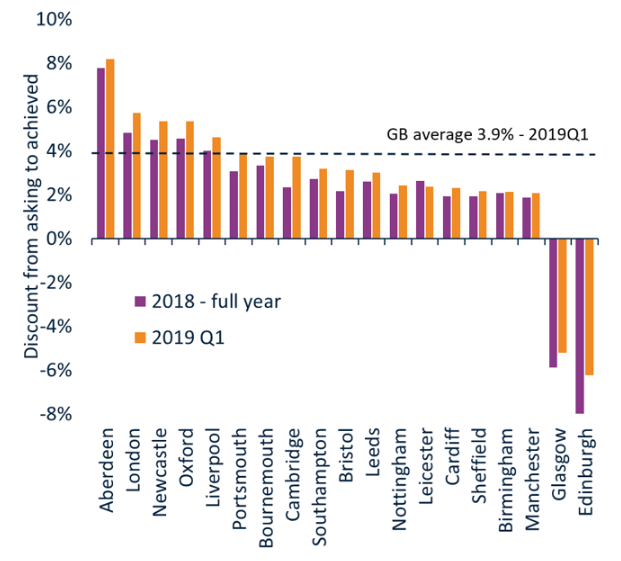Loan recasts also don't need credit checks. Although a recast doesn't reduce a loan term, it does assist capital by reducing mortgage payments. But if you enter into a large amount of cash and wish to settle your loan quicker, switching to biweekly home loan payments might make more monetary sense than a recast.
While numerous house owners recognize with the alternative of re-financing their mortgage, not all homeowners understand loan recasting. This may be since not all loan providers offer modifying or re-amortizing, and not all customers are qualified. Nevertheless, the process might save you cash in two ways: by minimizing your monthly home mortgage payment, and by allowing you to prevent the cost to re-finance.
For example, if you're 6 years into a 30-year mortgage, as soon as you recast your loan, you will still have 24 years staying to pay it off. For modifying to work, lending institutions need an additional lump amount payment to reduce your balance. The size of that extra payment impacts how much you can save with a loan recast.
Loan recasting can make good sense if you inherit cash (or receive a significant perk at work) and desire to apply it to the balance on your home mortgage. Due to the fact that you reduce the balance ahead of schedule, you ultimately will pay less interest. This then allows lending institutions to modify your loan, or recalculate your monthly mortgage payment.

For example, some lending institutions need a swelling amount payment of $5,000 or 10% of the loan whichever is greater to reduce the balance prior to certifying somebody for a loan recasting. If you have a $400,000 home mortgage at 4% interest for thirty years, your regular monthly principal and interest payments would be $1,910.
A lump amount payment of 10% of the remaining loan balance would be $31,554, bringing the balance to $283,582. In this case, the month-to-month payments would decrease to $1,718. However, keep in mind that while conserving $200 monthly on your home mortgage payment is a rewarding goal, you will also have actually spent a substantial amount of cash to accomplish that decrease in payment.
Loan recasts are allowed on standard, adhering Fannie Mae and Freddie Mac loans, however not on FHA mortgage or VA loans. Some lenders modify jumbo loans, but consider them on a case-by-case basis. In order to get approved for a loan recast, you should be present on your loan payments, and have the cash needed to pay down your primary balance.
The 5-Second Trick For How Common Are Principal Only Additional Payments Mortgages
By recasting your loan, you can reduce your capital without the expenditure of a home re-finance, which can require an expense of as much as 6% of your loan balance. In fact, sometimes, what would be invested in the re-finance might be used to decrease your balance enough to receive a loan recast.
If your house has actually dropped in worth, you may not be qualified for a refinance, since a lot of loan providers just re-finance a house with a minimum of 5% to 10% in equity. Loan recasts usually do not require credit approval. If you have credit problems and can not receive a refinance, you might still qualify for a loan recast.
If you are a homeowner who has bought a brand-new house before offering your current house, you may temporarily require to pay two home mortgages. Once you have actually sold your previous house, you can utilize the revenue from https://pbase.com/topics/tirlewlv1n/lkxovlt700 that home sale to pay for your loan balance and recast your home mortgage to make the payments more cost effective.
Simply bear in mind that you generally need to wait 90 days after your loan goes to settlement prior to you can modify it. Prior to you decide to modify your loan, you would be smart to evaluate it in the context of your whole financial plan (mortgages or corporate bonds which has higher credit risk). A few of the downsides of loan recasting include:.

For instance, if you have high-interest credit card financial obligation, you must definitely pay that off first. If you do not have an emergency situation savings fund or need to set aside money for other costs, it's probably best that you not put your entire windfall toward paying down your home loan. You should likewise consider loan modifying in the context of your retirement.
However, a loan recast will not shorten your loan term, although it could improve your money circulation. If your goal is to minimize your home loan balance, switching to biweekly mortgage payments or merely making routine additional payments to your principal may be a much better option than a loan recast. If you are paying a high rates of interest, a re-finance may be a better option.
Loan recasting isn't for everyone, but if you have additional cash, consult your lending institution to see if this technique of reducing your month-to-month payment is best for you. If you are a house owner who is offering one home and moving into another, you could effectively gain from a loan recast.
Fascination About School Lacks To Teach Us How Taxes Bills And Mortgages Work
Home loan recast (likewise known as loan recast or re-amortization) is a method by which house owners can decrease their regular monthly home loan payments and minimize the interest paid over the life of the loan. It allows customers to pay a large, lump-sum quantity towards their principal in order to minimize their regular monthly home loan payments.
Home mortgage recasting is a method to decrease the interest costsInterest Expense without shortening the loan term, where remaining payments are determined based on a brand-new amortization schedule, and is perfect for people who recently got a large amount of money and desire to lower their home mortgage expenses. Therefore, if a person's primary goal is to decrease monthly payments instead of settling their loan much faster, then a recast might be considered.
Expect, if an individual holds a 30-year mortgage carrying a principal balance of S200,000 with a 5% rate of interest, they might pay $1,200 per month. In such a case, spending around $50,000 on recasting can help them conserve about $300 each month in monthly payments and almost $35,000 in primary paymentsPrincipal Payment.
Even though both refinancing and recasting can assist debtors conserve money, recasting is largely appealing as it is reasonably affordable and easier to do. Unlike refinancing, modifying enables customers to keep their existing loans. Customers need to pay closing expenses and appraisal while requesting a new loan in case of refinancing.
Hence, recasting can be a cost-saving alternative, thinking about the large investment of capital expenses in refinancing. Individuals typically choose for re-financing to get a lower rate of interest which is not possible with modifying or to move from an variable-rate mortgageAdjustable-Rate Home Mortgage (ARM) to a fixed-rate home mortgage. For this reason, modifying is ideal when a person's taken out a low-interest, fixed-rate home mortgage and wants lower month-to-month payments.
Therefore, the principal owed increases in time as the quantity of deferred interest is contributed to the principal balance. As the primary quantity increases gradually, unfavorable amortization home mortgages require that the loan is recast at some point so as to pay it off before the scheduled term. Home equity loans permit customers to utilize their home equity as security, where the value of the residential or commercial property determines the loan amount.